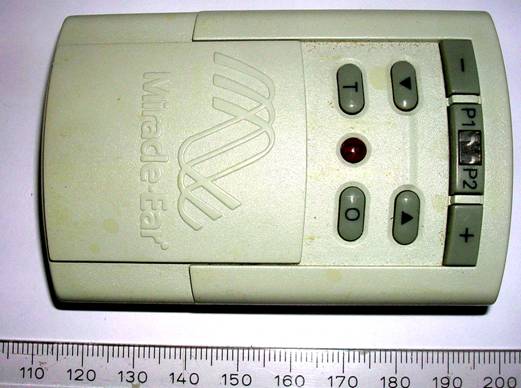
South Australian Medical Heritage Society Inc
Website for the Virtual Museum
Home
Coming meetings
Past meetings
About the Society
Main Galleries
Medicine
Surgery
Anaesthesia
X-rays
Hospitals,other organisations
Individuals of note
Small Galleries
Ethnic medicine
- Aboriginal
- Chinese
- Mediterran
Hearing aids then and now
Acknowledgment: This information has been kindly provided by Andrew Dubrovka, MAC . Aud, MHAASA, He also allowed us to photograph many of the more recent hearing aids. Jason Fischer of The Health Commission donated the early models
Hearing loss is a common affliction of the elderly. It affects effective communication and it makes some self-conscious. Attempts to improve hearing date back to the early history of mankind. Thus the use of hollow animal horns or sea shells was common in prehistoric times.
In the 17th century artisans produced hearing horns and trumpets. They had varying shapes and ranged from simple to ornate. There was considerable variation in shapes and sizes. Beethoven apparently had three or more of these. Some men hid their trumpets under their hats and in their beards
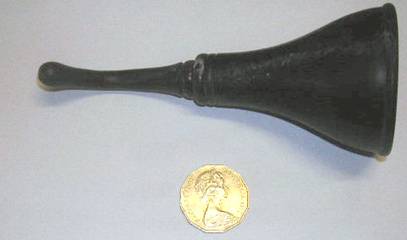
A simple hearing trumpet
.
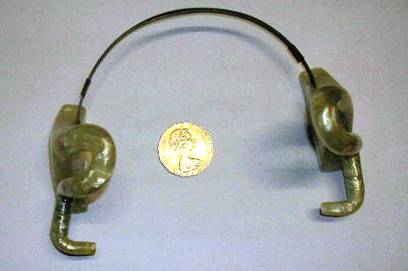
A variant of the trumpet. The head band and a pair of rectangular trumpet-like sound collectors connected to the ear pieces.
.
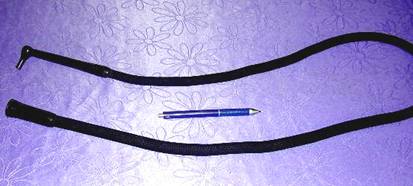
A tube hearing aid. the upper end fits into the ear. One speaks into the lower end. A trumpet can also be attached. This principle also used on ships to communicate between the bridge and the engine room.
Hearing aids 1940-present
Not much changed until the invention of the telephone, when a similar technology was applied to hearing aids. The apparatus was cumbersome and the 6 volt batteries heavy and short lived. Such appliances were used in the early 1900s.
Between 1920 and 1930 the sound was amplified by triode valves. Again these devices were bulky and expensive. As all the background noise was also amplified these devices had a limited usefulness.
After the second world war there was a rapid expansion in technology. The transistor the microchip as well as analogue and digital technology have lead to miniaturisation and current hearing aids are barely visible and vastly superior.
The background noise can be filtered out and the apparatus can be adjusted to differing environments such as conferences or table conversation. The batteries have also changed. The mercury or lithium ones have been changed to zinc-air models. These have a longer shelf life, while the active time is the same or longer.
Finally computer assistance enables the clinician to recall information about the past use of hearing aids both left or right. This makes further adjustments easier.
There are various acronyms which describe the type of aid:
BTE = Behind the ear.
ITE = In the ear.
ITC = In the canal.
MIC = Mostly in the canal.
CIC = Completely in the canal.
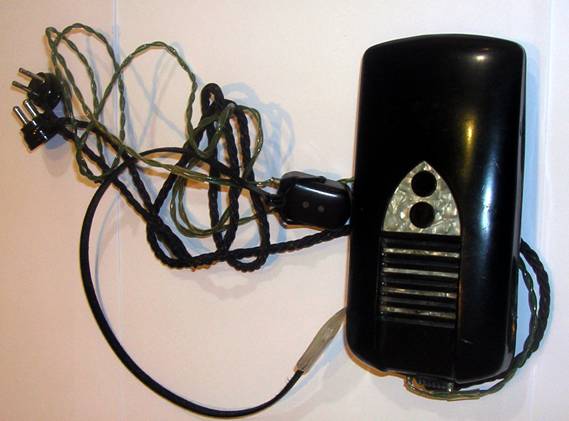
A body level hearing aid.
A bone vibrator is in contact with the mastoid bone and the sound is transmitted by bone conduction to the cochlea bypassing the middle ear. The photograph shows the vibrator next to the box. The head band and wires to connect the batteries on the far left.
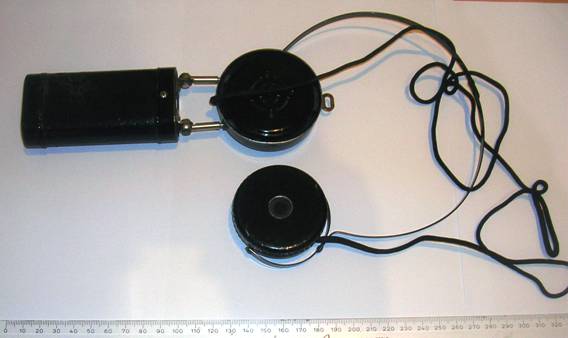
Head phones connected to a body level hearing aid
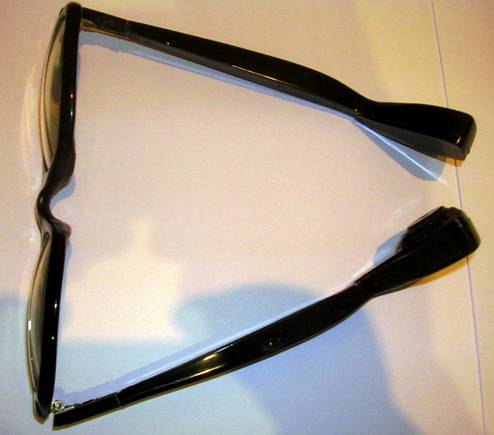
Bone conduction spectacle hearing aid. The bulky ends are in contact with the skin over the mastoid bone
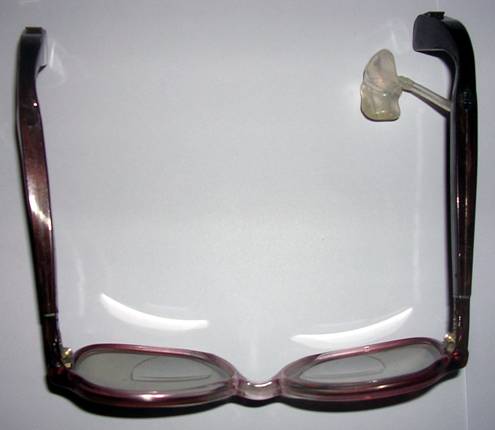 Spectacle hearing aid with an ear mould
Spectacle hearing aid with an ear mould
An early remote control for a hearing aid. It could adjust volume on the left or right and make some changes in the hearing program. It is no longer used.
Australian made hearing aids
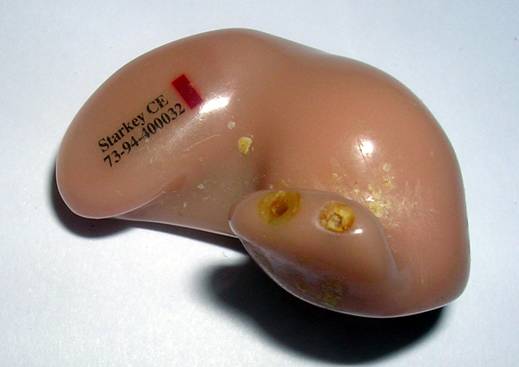 In the ear hearing aid circa 1940
In the ear hearing aid circa 1940
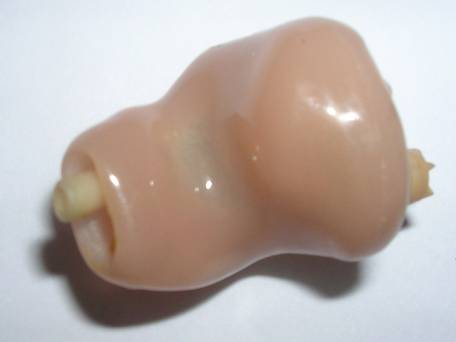
In the canal hearingaid. The volume control is on the right. The left fits into the auditory canal
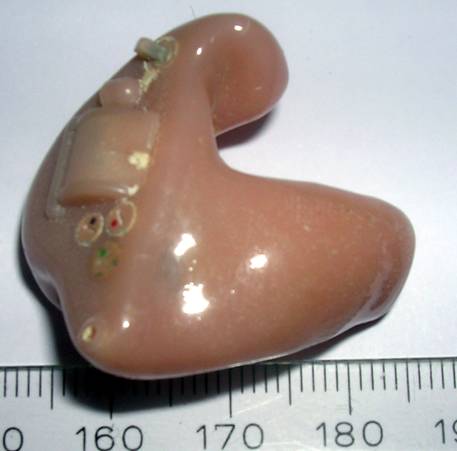
A very early in the ear hearing. aid for the left ear. There was no volume control
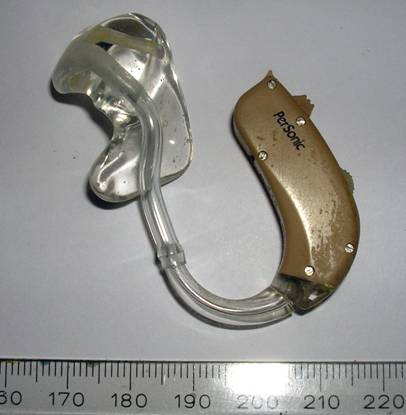
Two behind the ear analogue hearing aids, with soft (below) and hard (above) ear pieces.
The volume and frequency range could be adjusted with a tiny screwdriver. A difficult manoeuvre for the elderly. Thus all adjustments were made by a technician.
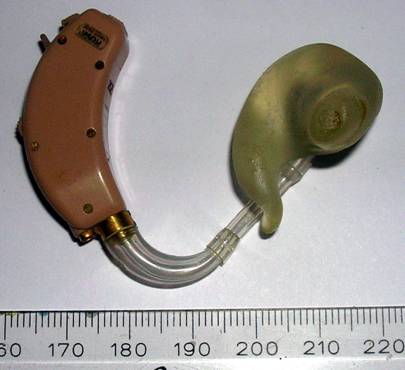
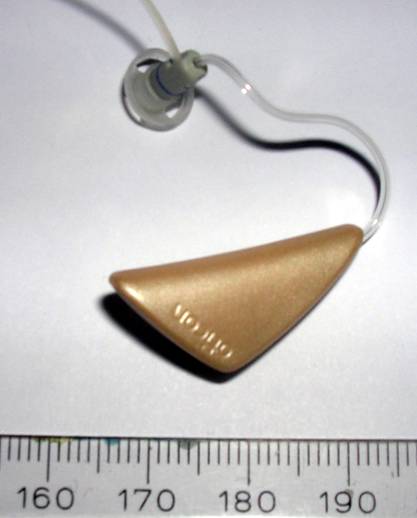
Two more open fit hearing aids.
The larger component fits behind the ear and a plastic tube connects to the ear piece. Originally the tube was hollow and the sound transmitted by air conduction. This is now replaced by a wire connection which uses less battery power.
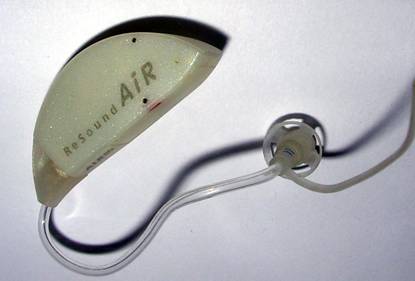
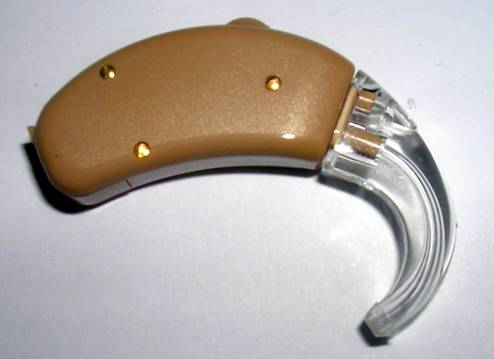
Behind the ear hearing aid.made by Siemens It measures 3.5 centimetres in total length
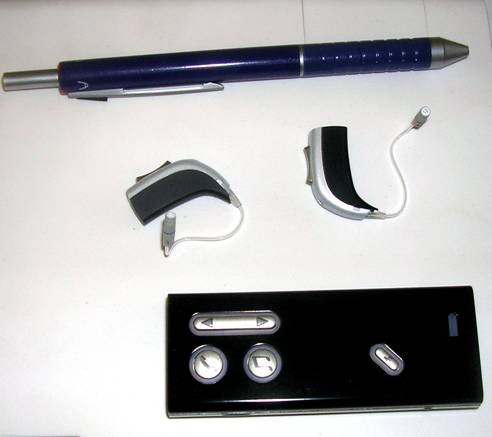
see description below photo
Currently available hearing system. Behind the ear components left.and right. are above. The remote “blue tooth” control set is below The above hearing aids can be used independently of the box. But any communication with other “blue tooth” apparatus will be lost.
-o0o-
